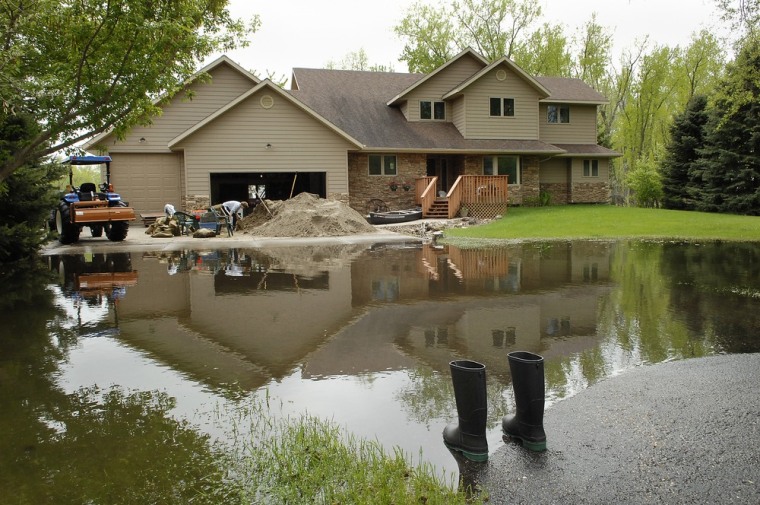The U.S. Army Corps of Engineers is warning Missouri River states to brace for worsening floods, as it opens dams straining under the pressure of heavy spring rains and above-normal Rocky Mountain snowpack melt-off.
The warning raises the specter of a second bout of disruptive and potentially devastating flooding in an already soggy section of the country.
The Missouri — crossing 10 states at it makes its way from Gallatin, Mont., to St. Louis, Mo. — is a major tributary of the Mississippi River, which has already experienced historic flooding this spring. Homeowners in Louisiana's Cajun country are still witnessing a slow rising tide of Mississippi River water diverted into their basin.
"There's no good news," said Jody Farhat, chief of the Corps' Missouri River Basin Water Management Division in Omaha, Neb.
Farhat said the Corps is approaching the top of the gauges at its three upper basin dams — Fort Peck in Montana, Garrison in North Dakota and Oahe in South Dakota.
"Basically, there is little or no storage left in our reservoirs," she said.
The record water releases are being triggered by steady rain in the northern Plains and an above-normal mountain snowpack.
For the area in and around Bismarck, N.D., Garrison releases began Monday and will be 30 percent more than the record set in 1975. The dam was built in the 1950s.
"It moves us into uncharted territory," Farhat said.
In Bismarck, several streets were already flooded and the Dakota Zoo closed due to impending high water. The zoo said it could be closed for several weeks and had moved many animals to neighboring zoos.
Nearby Moorhead, Minn., was sending 250,000 sandbags via truck to help out, the Bismarck Tribune reported.
In and around Pierre, S.D., areas below the Oahe Dam will experience flood stages not seen since that dam was built.
Farther south, at the Gavins Point Dam on the South Dakota and Nebraska border, Farhat expects June 1 flows to be 7 percent above a record set in 1997. Additional releases in early June are expected to push the total up to 21 percent above the 1997 record, she said.
"This is the situation where we are today," Farhat said Wednesday, "but it's not the worst case scenario because snowmelt and additional heavy rainfall may mean even higher releases."
Snowpack in the reach above Fort Peck hit 141 percent of normal peak, with current conditions at about 108 percent of the normal peak accumulation.
The snowpack above Garrison Dam reached 136 percent of normal peak, but is slow to melt, with 132 percent of the normal peak accumulation remaining and actually gaining snow in some of the higher elevations, the Corps said.
